Are you thinking of going on a BIG journey — not wanting to visit just one country but itching to explore many countries in one trip?
Then let me share some of the best multi-country backpacking routes around the world. These are great travel routes that let you explore within specific regions, though if you want to be really ambitious, you could even chain several of these together to form an epic round-the-world trip.
Let’s go!
How these routes work
Before I became a travel addict, I actually had no clue at all that there were all these established routes that many travelers follow.
Sure, I had my wishlist of individual destinations — countries that I’d heard or seen things about — but I was unaware of these longer routes that pass through multiple countries.
The funny thing is: these routes have always been there, but they’re just not official in any way. There won’t ever be any signs saying “classic Asia backpacker route this way! →“
However, once you start travelling them, it becomes obvious many people take more or less the same path because it’s often the most sensible one.
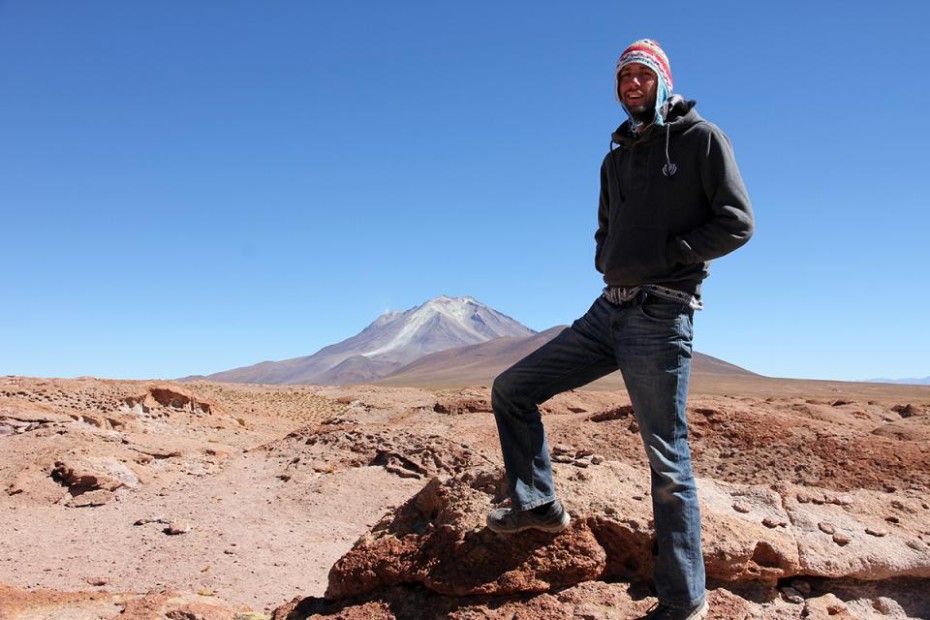
These backpacker routes have formed over time through word of mouth and through factors like geography and transit connections. They’re not exactly set in stone, just roughly what many people do.
When you’re on a long overland trip, it can be easy and rewarding to slip into one of these well-worn grooves. Like a river carrying a boat downstream, these backpacking routes can take you along for a wonderful ride.
Don’t have enough time to do these routes all the way?
Then you can always bite off a smaller piece!
For example, consider two or three adjacent countries you like the sound of. Instead of doing all of Central America, try southern Mexico and neighboring Guatemala. Or instead of covering the whole of Southeast Asia, maybe just focus on Thailand and Laos.
Either way, knowing about these routes can be of great help when you’re still just staring at a map of the world and wondering where to go.
Let me help you plan an epic backpacking trip!
Are you serious about your next adventure? Then I have SO much more to tell you that I simply can’t share in a blog post.
Don’t miss my absurdly inspiring and super practical 338-page guide to backpacking: Travel the World Without Worries. I promise you’ll love this in-depth resource that will help you plan, prepare & know exactly what to expect.
Yes, Inspire me!Oh yeah, and didn’t I mention I wrote a book that is perfect for planning a backpacking trip?
Check out the routes below, but then be sure to check out Travel the World Without Worries, which I promise you is just what you need to decide where to go on your adventure.
Popular backpacking routes
Southeast Asia (Banana Pancake Trail)
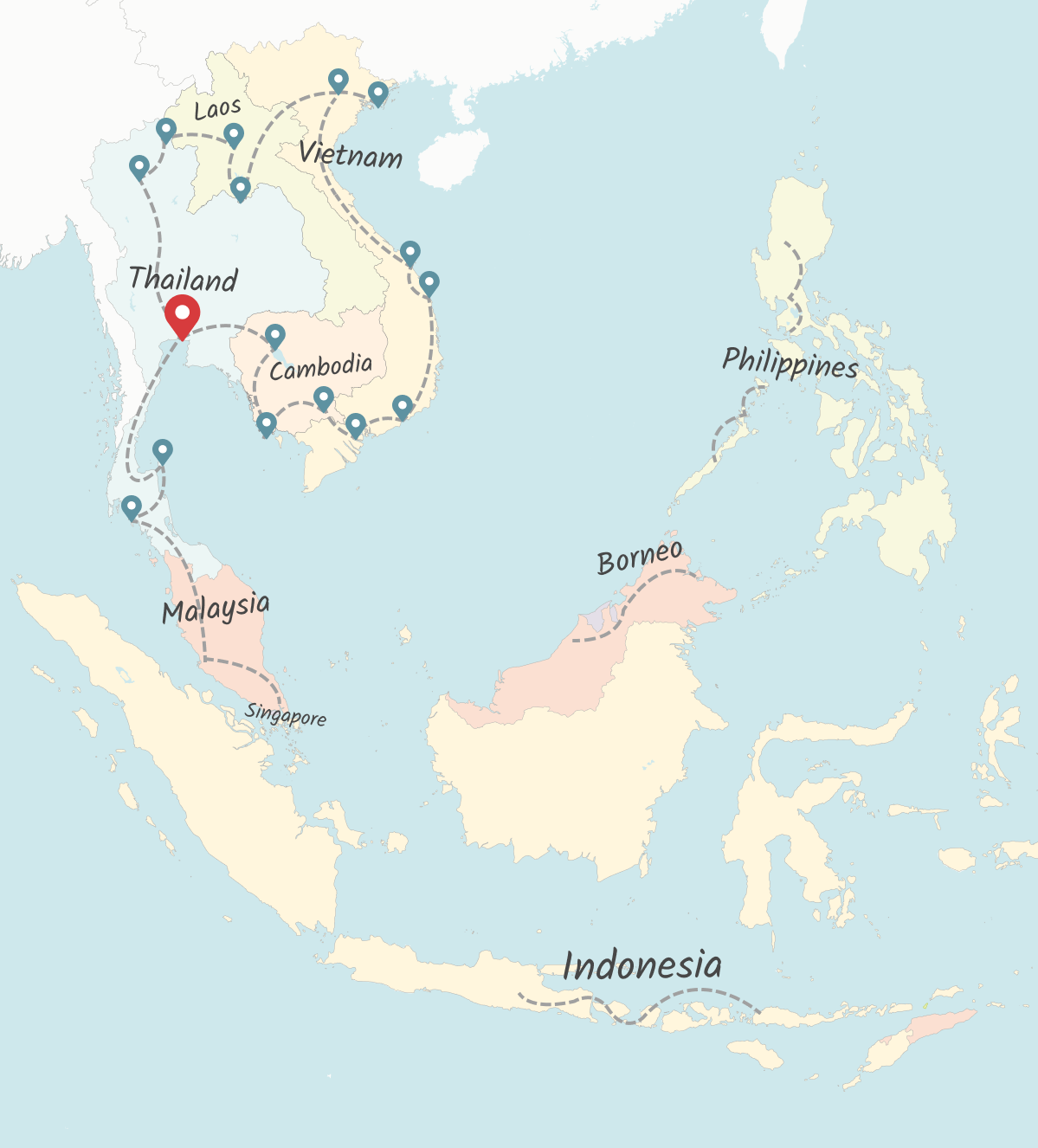
Southeast Asia is considered by many to be one of the world’s best backpacking regions. And I happen to think so too! It is cheap to travel, has high safety levels, a wealth of amazing points of interest, a balmy tropical climate, and a great network of local transportation links.
While there’s still some learning curve and maybe a bit of culture shock if it’s your first time, it’s an excellent region to get your feet wet.
The Banana Pancake Trail got its tongue-in-cheek name during the early days of backpacking in Asia. Food vendors and guesthouses began catering to travelers by selling banana pancakes and other comfort foods, giving them some welcome relief from rice and noodles. Back then, the availability of banana pancakes would be a sure sign that other foreigners had come before.
As a very rough rule of thumb, it takes about $1,000 a month to travel as a backpacker in most parts of Southeast Asia. I first traveled in Southeast Asia for almost nine months straight and I’ve since come back for several one- to three-month trips. If you want to take the plunge but you’re not quite sure where, then check out my deep dive into Southeast Asia itineraries, which includes a breakdown of the classic Banana Pancake route.
Whatever vibe you’re looking for in Southeast Asia, you’ll probably find it. Some bits of the Banana Pancake trail have a major backpacker party scene, though it’s also extremely easy to go off the beaten track and avoid other tourists.
Check out region page for Southeast Asia for a lot more info and inspiration!
And don’t miss these essential tips for backpacking in Southeast Asia.
Central America (Gringo Trail)
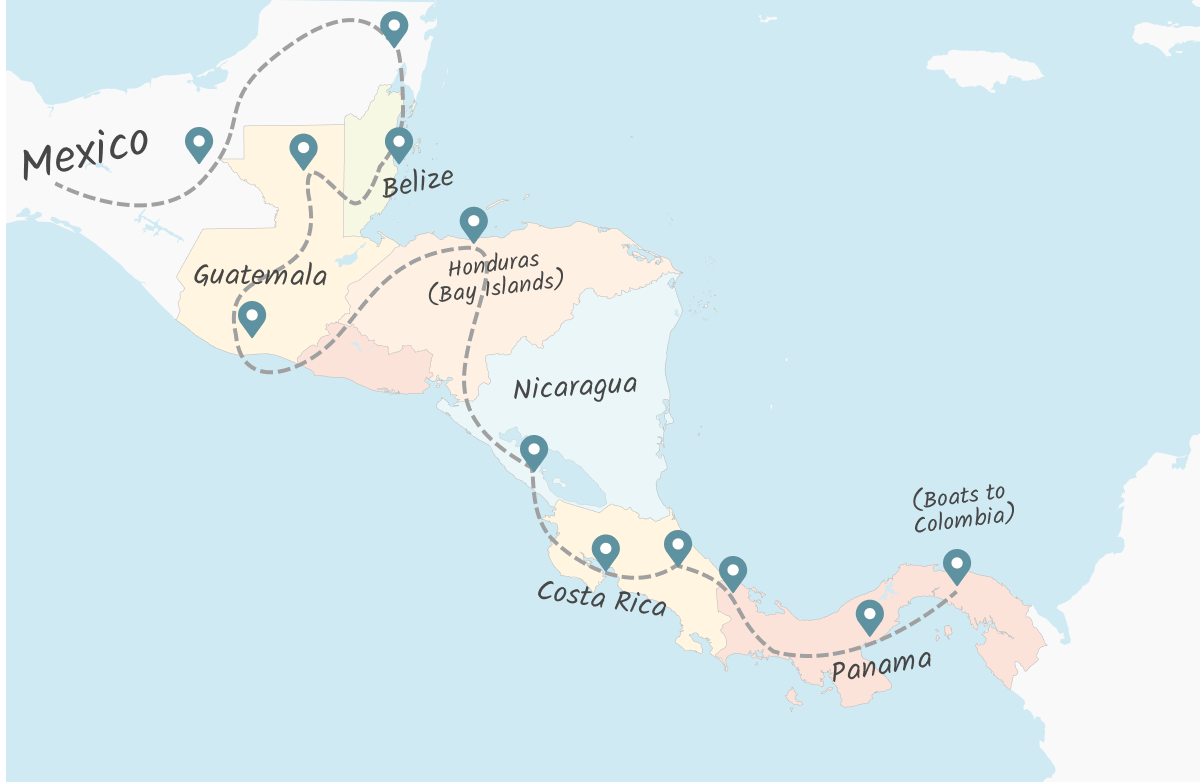
Central America encompasses seven small, mostly tropical countries—eight if you count Mexico, which is in North America but often included in a trip around these parts.
The Gringo Trail is named after the local slang word for a foreigner, and it loosely follows the Pan-American Highway that stretches from Mexico all the way down to Chile—though I’ll talk about just the Central American section first. The perfect amount of time to do this Central American backpacking route justice is 3 months, but I think you could see quite a bit in 6 weeks.
What’s great about Central America is that it’s relatively compact yet also has a wonderful geographic and cultural diversity. The region has more jungles, lakes, volcanoes, and tropical beaches than you can shake a stick at. And let’s not forget the impressive remnants of the indigenous Mayan, Aztec and Olmec civilizations, as well as Spanish colonial influences in many of the towns and cities.
The security situation can be a bit tricky, especially in Honduras and big cities in Bezile and Guatemala (El Salvador used to be pretty hairy too, but got better in recent years). The language barrier can also be a problem if you don’t know Spanish, as unlike in Asia even those working in the tourism industry might not always know English. Then again, it’s a great opportunity to learn a new language. Central America is usually very cheap to travel, with only Belize and Costa Rica being relatively more pricey.
Check out region page for Central America for a lot more info and inspiration!
South America (Gringo Trail)
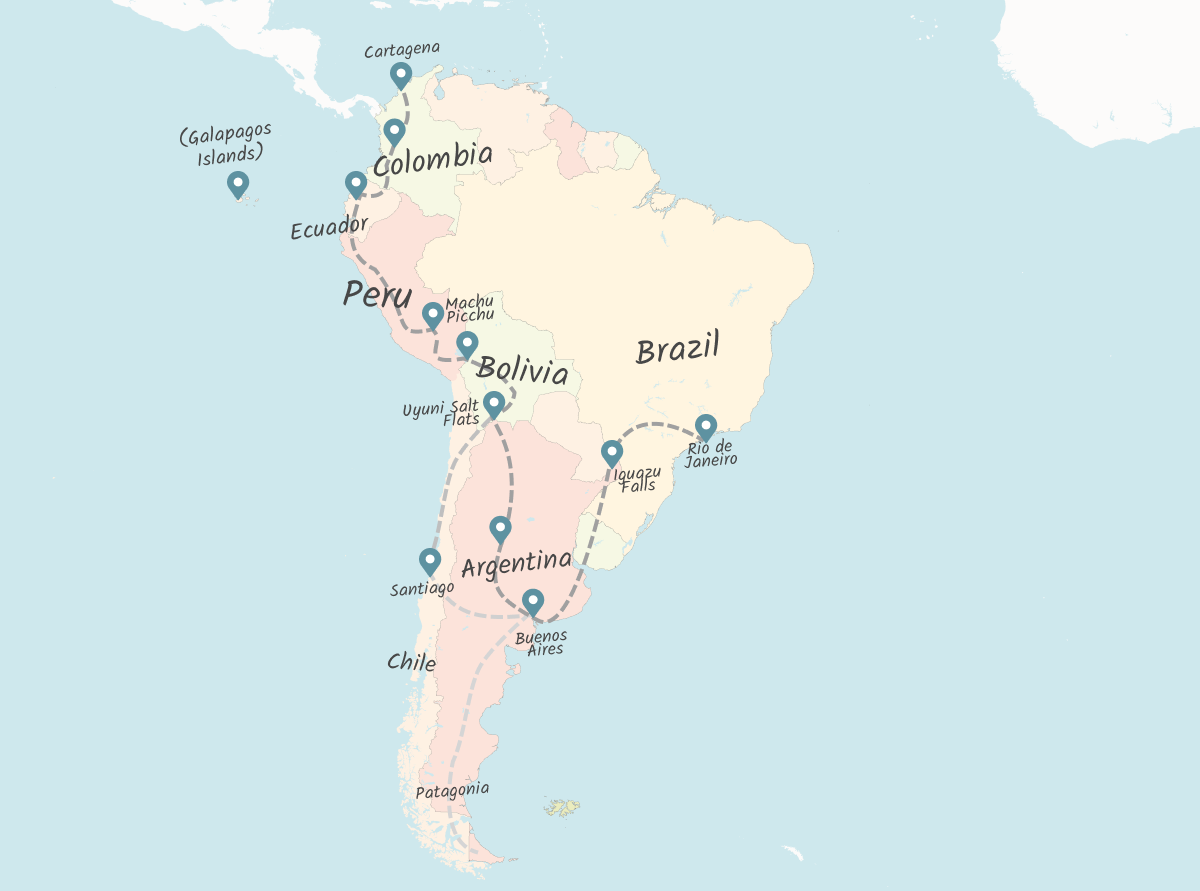
The Gringo Trail continues down from Panama all the way to northern Chile. Beyond this point, it then also has a sort of side-route running east into Argentina and up into Brazil.
While the Atlantic side seems hardly traveled (e.g., relatively few go to countries like Suriname or Venezuela), you’ll find lots of backpacker infrastructure along the Pacific side of South America.
Distances can be a challenge. South America is truly enormous, key points can be very spread apart, and you may be surprised to find that there still are not that many budget flights — so you may have to sit in some very-long-distance buses to cover some ground.
I still get traumatic flashbacks to the time I took a 20-hour non-stop bus from Buenos Aires to Iguazu! While Colombia, Ecuador, Peru, and Bolivia still have relatively compact circuits, the distances get a lot more hardcore once you get to Argentina, Chile, and Brazil.
But it’s also the sheer size and perceived remoteness that makes South America one of the ultimate regions to travel. You’ll truly feel like you’re on an epic journey.
Along the loosely defined Gringo Trail you can find a ton of major attractions, including the Inca ruins in Peru, the salt flats of Uyuni in Bolivia, and the gigantic waterfalls of Foz do Iguaçu on the Argentina-Brazil border. You’ll also probably want to take a trip somewhere into the Amazon rainforest in Colombia, Peru, Bolivia, or Brazil.
As in Central America, English isn’t widely spoken. Then again, it’s worth learning the local language here more than arguably any other region in the world. What I love about traveling in South America is that even with some basic Spanish you can have way more contact with the locals (outside the tourism industry) than in Southeast Asia or other regions.
A Grand Tour of Europe
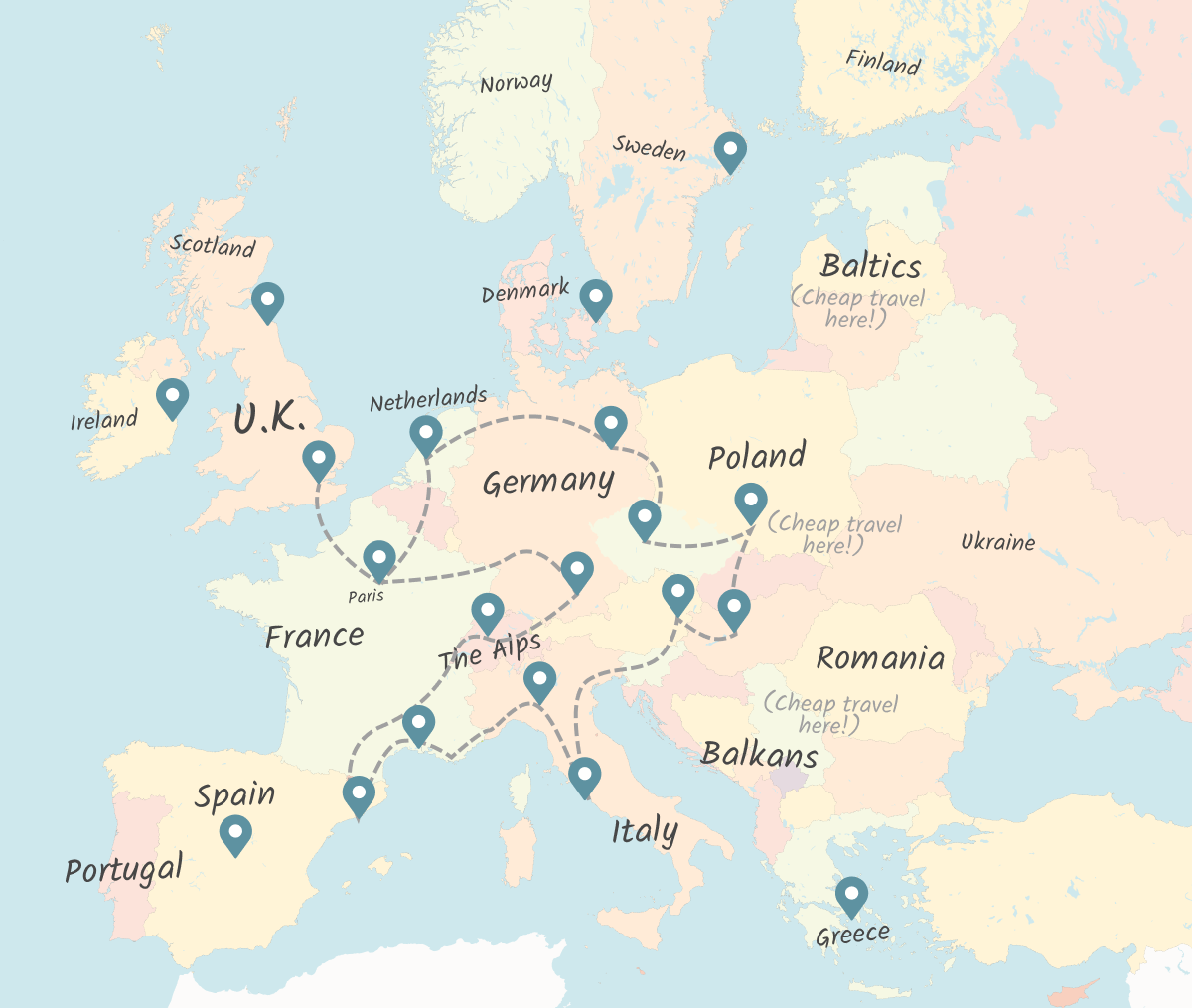
This part of the world is easy to travel in but not exactly cheap, especially in Western or Northern Europe. There also isn’t as much of a typical route: you can pretty much go everywhere from anywhere, and the geography doesn’t really force a particular way through. Instead of one route that everyone does, there are dozens and dozens of ways to travel through Europe.
Arguably the best way to cover Europe is by train (and occasional bus). The rail network is among the world’s best. Try to take some overnight trains to catch some real travel mood. One cool thing is that you can buy a European rail pass that gives you basically unlimited travel on the continent for one price (with some stipulations, of course).
Don’t forget about the central and peripheral parts of Europe. Countries like Poland, Slovakia, the Czech Republic, and Hungary are all very interesting and also happen to be much more affordable compared to Western and Northern Europe. The same often goes for the Balkans and the Baltic states. You can have a phenomenal time backpacking the Balkans and spending just a fraction of what you’d spend in France or Germany.
One other tip for backpacking Europe: due to the diversity of cultures and close proximity of some capitals, it can be difficult to pull yourself away from the cities. Many backpackers end up seeing 30 cities but no countryside, which is a shame. Don’t just go on a whistle-stop tour from capital to capital, but try to travel around within each country to get a more varied experience.
Central Asia (tracing the Silk Road)
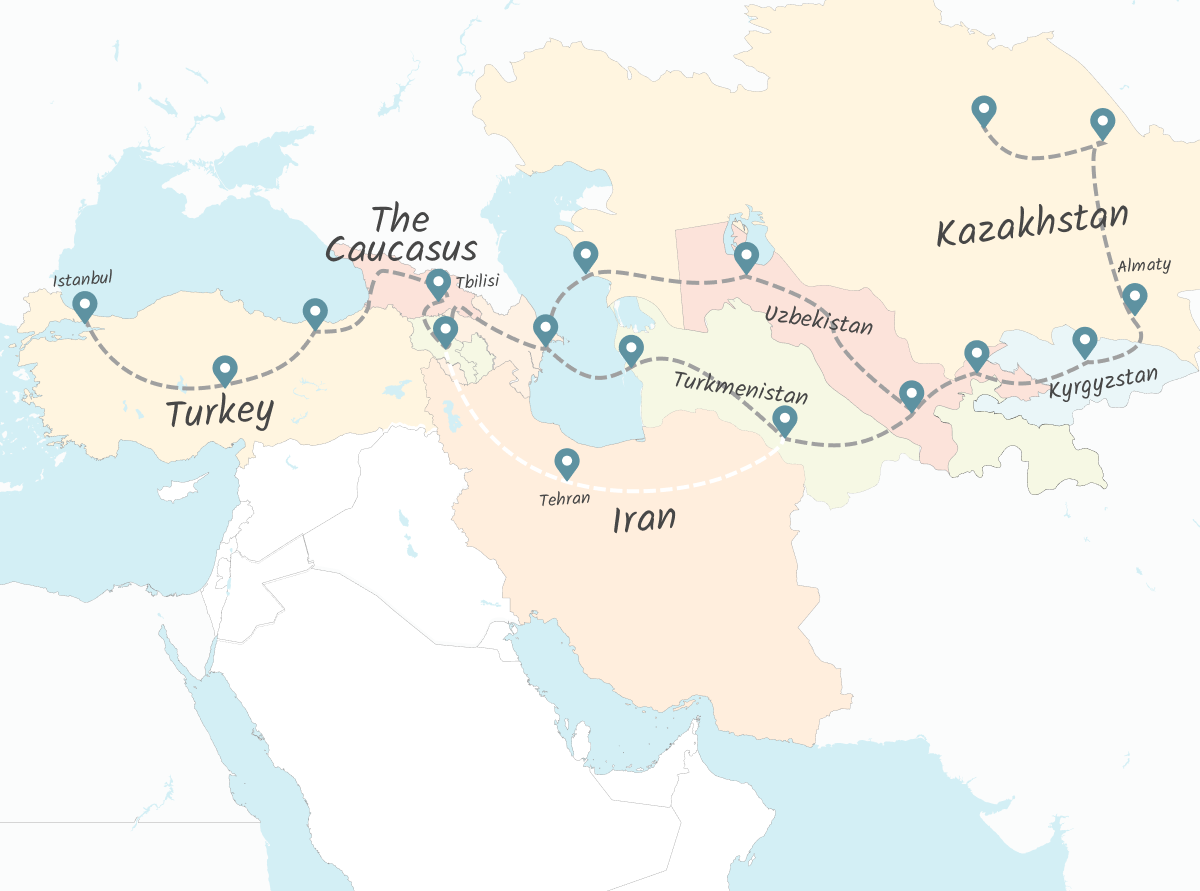
Intrepid travelers seem to be rediscovering this part of the world lately. While not as well-traveled as other backpacker regions mentioned so far, it’s a great choice if you’re looking for something a bit different.
This route starts in Turkey and then moves east into the Caucasus region, passing through Georgia, Armenia, and Azerbaijan. Then it crosses the Caspian Sea into Kazakhstan, potentially reaching as far as Mongolia and remote Western China.
As far as travel logistics go, the route starts off easy but gets a bit tricky in the middle. The crossing from Azerbaijan to Kazakhstan across the Caspian Sea is a bit of a hurdle, as it involves catching a ferry that goes only once a week. Not everyone can get a visa for Iran or for Russia to get around this, but overlanding it via either of these countries can make for an interesting variation of this route. The ‘-stan’ countries are still rarely-visited, though they have recently seen more interest as developing ecotourism and adventure travel destinations.
I have done some of the first bits of this so far, traveling in Turkey, Georgia and Armenia. I look forward to exploring the rest in the future.
Southern Africa
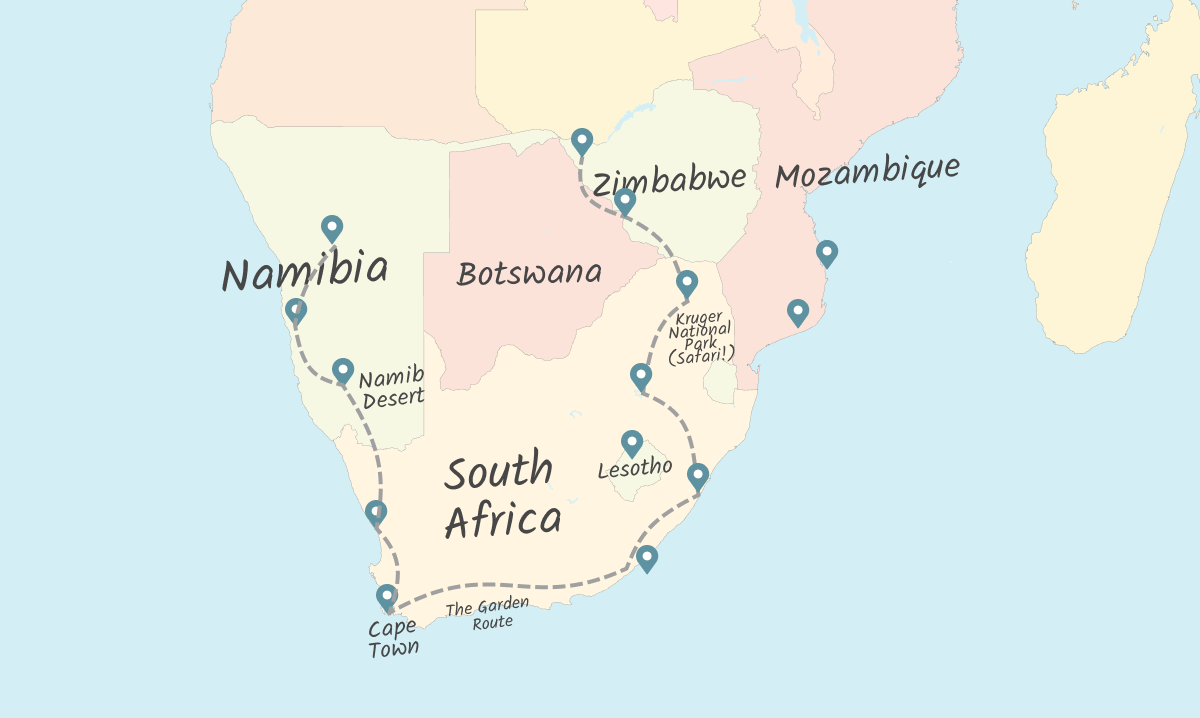
If you want to take a bite out of Africa and see several countries in this huge continent, then you might consider focusing on the south. South Africa makes for a convenient springboard; it has good international flight connections as well as a more familiar Western vibe that can help you settle in.
This part of the world can be a bit frustrating to travel at times though. The public transportation in Africa often just plain sucks. Connections are limited, some are unsafe, and it’s just nowhere near as easy to get around.
One cool option is to take the Baz Bus in South Africa, a hop-on hop-off backpacker bus service that can take you from Cape Town all the way to Johannesburg. You’ll be stuck with a limited schedule, but it’s at least easier than taking the normal buses.
South Africa can already take a good six weeks to cover properly; from there you could add on trips to nearby Swaziland and Lesotho, the beaches of Mozambique, the deserts of Namibia, or perhaps even Victoria Falls on the Zambia/Zimbabwe border.
Other backpacking routes
I wanted to share with you here a few popular overland backpacking routes that are sure to make for some epic trips. Of course, the world is enormous, and there are many more routes.
Here are a few more ideas for where to go backpacking:
- Backpacking around India. Search for the ‘Golden Triangle’ for info on the most traveled route, though India is huge and you could travel there forever.
- Backpacking Australia and New Zealand. The former is mainly popular with a young British crowd. Many backpackers travel through New Zealand using a rented camper van.
- Riding the Trans-Siberian Express from Moscow to Mongolia or China was once one of the popular overland routes, though it has clearly fallen out of favor following Russia’s invasion of Ukraine.
- Backpacking the USA. Sadly, the US doesn’t have the kind of backpacker hostel network or easy public transportation that other regions and countries have. I have only been to several states so far, but I’ve always felt the US is best done on a road trip!


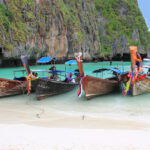
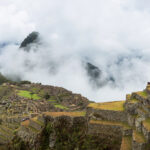

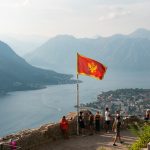

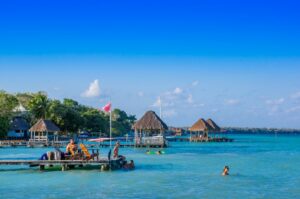

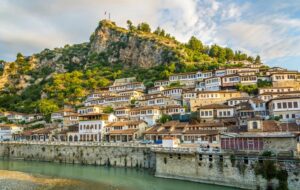

As you mention India, I recommend spending at least a month in the North to South of India, if you only have a short while in India you may want to consider flying into Bangalore and exploring the south for a couple of weeks before heading up towards Jammu and Kashmir, Hampi and Goa. India has always been a popular backpacker destination. Until recently, however, backpackers’ sleeping quarters were limited to cheap guest houses. This has changed dramatically with real, high-quality hostels from all over India.
The US may not have the hostel network of Europe, but now with apps like Airbnb and VRBO, that’s become a moot point. Besides, the US also has great national parks, state parks, and KOA campsites, plus out west there is cheap, often free primitive camping in BLM land, often in spectacular surroundings. You’re right, though, to really see the US, you’re going to need a car. For an extended trip, people should consider buying an old car or SUV for the trip, and selling it at the end.
The old Route 66 drive from Chicago to Los Angeles is as classic a road trip, and as pure Americana as you can get. For shorter trips, there is the Pacific Coast Highway that runs from Northern California, through the Wine Country, down to the LA area, the Natchez Trace Parkway that runs from Mississippi to Tennessee, A1A through Florida from up around Kennedy Space Center all the way down to Key West, the Blue Ridge Parkway, and many other National Scenic Byways and other auto trails.
For true hiking backpackers who want a real adventure, try thru-hiking the Appalachian Trail, the Pacific Crest Trail, or the Continental Divide Trail, which runs through spectacular Rocky Mountains scenery from Canada to Mexico. Even just doing a few segments of one of these trails would be an adventure of a lifetime
Great points – and thanks for sharing these tips!
The USA has a few long-distance passenger trains (Amtrak) that run across the country. The train isn’t always timely and prices vary, but the USA has amazing scenery and the train is a great way to see it! The California Zephyr from Chicago to San Francisco is highly recommended for its incredible scenery. It offers an up-close and personal view of many of the “fly-over” states. Make sure to stop in a few cities or towns along the way. Happy travels!